
- Courtesy
- "Together Black and Yellow" by Enrico Riley
At the BCA Center in Burlington, the "Essential Figure" show asks: What is the figure and what is it doing these days? The artists in the exhibition take six entirely different approaches and gesture toward a refreshing new vision of the genre.
In art history, the figure is generally a depiction of the human form. It is a body but not a person. The figurative tradition really hit its stride embodying abstract concepts: gods, saints and mythical characters; Justice, Liberty, War; cartoon stereotypes. Any art museum's pre-20th-century permanent collection is rife with pictures of allegorical people. Near the top of the academic art-subject hierarchy, a convincingly physical representation of the body in space was also a way to prove one's artistic chops.
In the past hundred years, many artists moved away from the figure for a variety of reasons. It was highly gendered, often portraying women's bodies seen with a male gaze. Nonwhite bodies were often exoticized. The intent was for the viewer to objectify the body and appreciate the skill with which it was rendered but not to identify with the real person in it.
Brooklyn artist duo Lorenzo Triburgo and Sarah Van Dyck take this history and explode it in a shower of gold glitter. The photographs on display from their "Shimmer Shimmer" series include three 48-by-32 and 24-by-30-inch images of Triburgo, nude, by the ocean. The artist's poses are recognizable from Renaissance history. They extend an arm like a discus thrower in "Mars," tilt their head and gracefully pose their hands in "Venus," as though emerging from a half shell.
The images in the series were taken while Triburgo had paused a 10-year course of transgender hormone therapy, an action they took as a performance piece and with a desire to "occupy new subjective space," according to their website. The nonbinary figure in the photos sparkles with gold glitter and sand from the historically gay-friendly Jacob Riis Beach in Queens, where the photos were shot.
Triburgo and Van Dyck also include smaller photos in their installation, constellations of glitter against a black background that hang close to each larger frame. Trans bodies are celestial in this work and, Triburgo says, "signal to the viewer that the title 'Mars,' for example, refers to the planet" and not to the (gendered) god.
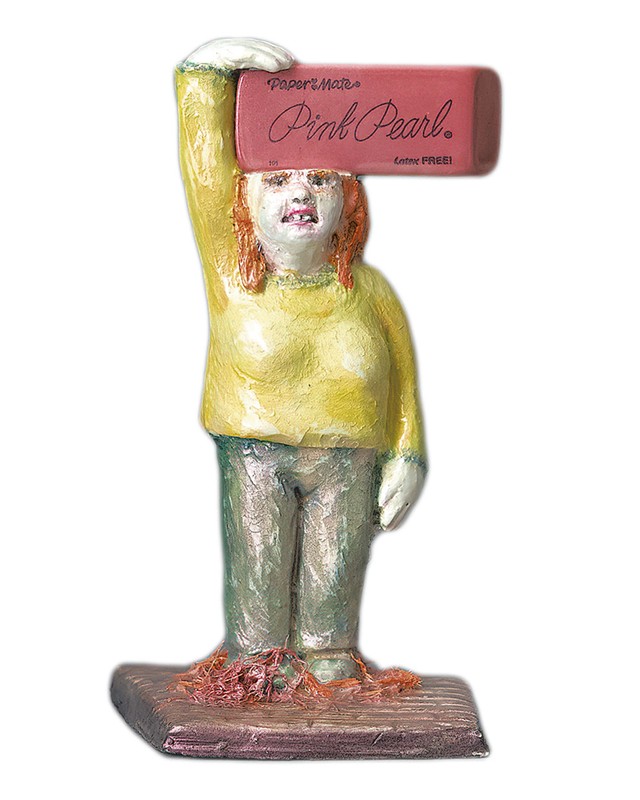
- Courtesy
- "Woman Making Herself Invisible" by Jennifer McCandless
Burlington artist Jennifer McCandless' ceramic sculptures have a closer relationship to figurative cartooning than to paintings of gods. Her characters have stepped out of a 19th-century funnies page, with exaggerated bodies that defy logic but feel grounded in gravity. The figure in "My Shirt Is Too Tight," which stands almost three feet high, bulges out of her shirt and hunches her shoulders over the solid mass of her lower half and uncomfortably cinched waist. The viewer can instantly relate to how this absurd body feels.
In "Baby Boomer Bad Ass With Patriarchal Shoulder Parrot," a 34-inch grandma clad in a skimpy, saggy Wonder Woman costume gives the viewer a knowing, tired look as a little old man rants on her shoulder. In the 6-inch "Woman Making Herself Invisible," a female figure uses a regular-size Pink Pearl eraser to efface her own head. McCandless' satirical characters are quirky, funny and recognizable to anyone with relatives.
The figures who make up Barre artist Hannah Morris' scenes are more opaque. Their intentions are conveyed through body language: hailing a cab, reading a paper, running across the street. The figures' placement and environments have a surreal quality, as if they exist in a dream. They don't seem to see each other.
Morris uses collage as well as paint, starting with a base of images from vintage magazines and painting over them, changing the original scenes dramatically. The technique helps her distill the action in order to focus on what specific figures are doing.
Morris bolsters this effect by playing with proportion. One figure — maybe a child — in a red dress in "Hobby Lobby" is getting up from a chair, but the chair is very large, as are her legs and forearms. This draws attention to the small moment. Morris doesn't tell us exactly what's happening, but because she observes individual gestures so carefully, her scenes are lively and believable.
In contrast to Morris' deliberate, solid people, Enrico Riley's three 58-by-54-inch paintings communicate bodies in motion, minus the bodies. Sketchily painted on bright backgrounds, his figures dance and exercise. Minimal gestures indicate the weight on a leg, an arm flung backward, a stretch.
In "Together Green and Dark Blue," Riley — who lives in Norwich and teaches studio art at Dartmouth College — wipes away the paint where the figures' heads and feet would be, but their faces still look down at their own dance moves. He celebrates Black identity not by portraying individual Black people but by communicating how a group moves together. He includes just enough detail for the viewer to recognize the figures' actions and their relationships to each other in time and space.
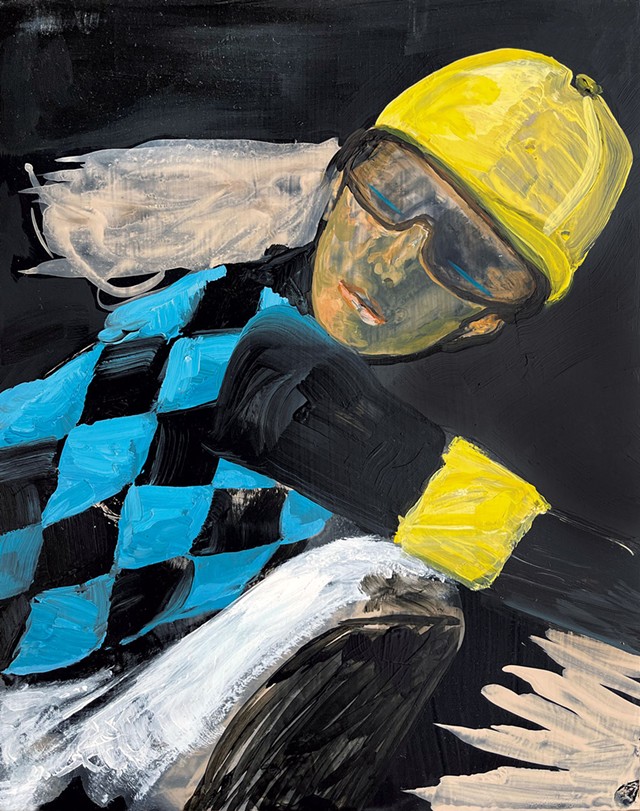
- Courtesy
- "Checkers" by Suzy Spence
Barre artist Suzy Spence's paintings are all about the figure in time — and that time is fast. Her "Racers" paintings all feature female jockeys, with only hints of a horse. Most use bright colors on a dark background. Spence's direct, forceful painting technique results in drippy paint and gestural brushwork. The pace of that gesture describes the racers as they flash by, covered in mud.
In the wall-size "Dirty Racer," the jockey's goggles reflect a smudge of sky, and a raw patch of canvas becomes brilliant white glare on her helmet. Spence is economical with her paint — it's flung about the canvas, but only exactly where it's needed. Details such as a splooge of neon orange poking out next to the racer's blue shirt help create a sense of urgency and speed.
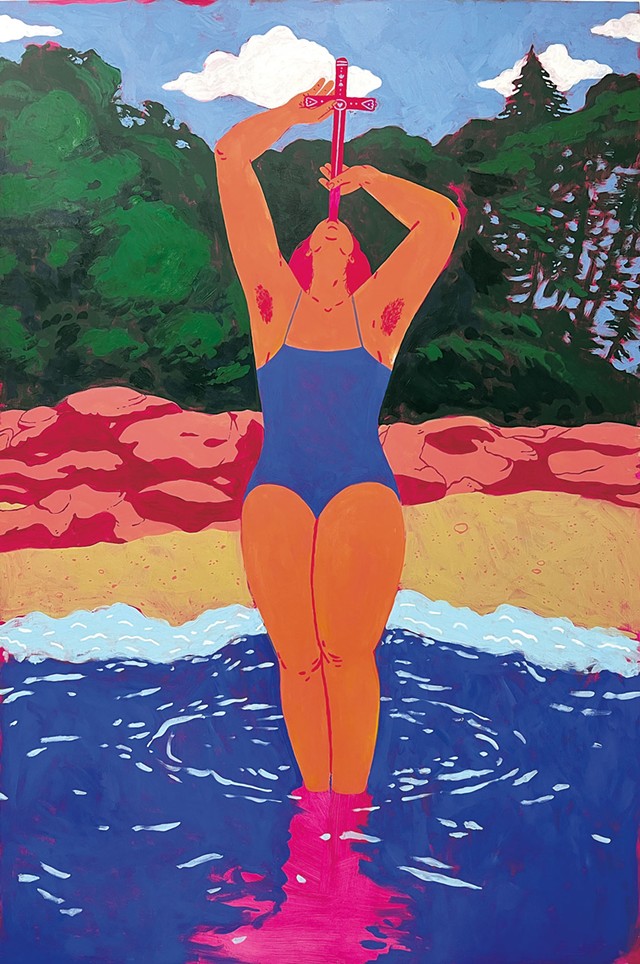
- Courtesy
- "I Go Down to the Shore" by Sophie Cangelosi
Color is Maine painter Sophie Cangelosi's primary means of pushing her subjects into the mythical realm. A bather wades in "I Go Down to the Shore," head back, swallowing a sword. Cangelosi's fluorescent pink and electric blue make the body vibrate against her reflection. The painting has the weird energy of a tarot card, where the figure seems symbolic, but of what is unclear.
The figures in "Birdwatchers" live a little closer to reality. Here, sun plays across their skin in bright yellows and pinks, emphasizing the shape of their arm muscles but not revealing who or where the bird-watchers are.
The exhibition as a whole challenges tradition by insisting on inclusion rather than perfection. It doesn't abandon the genre but considers which bodies we see and how they want to show themselves.
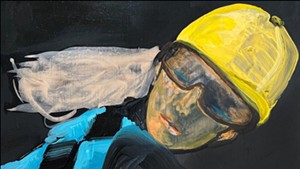





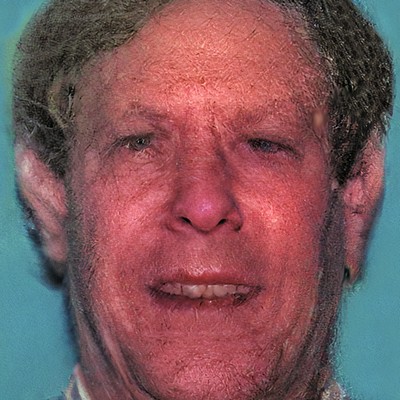

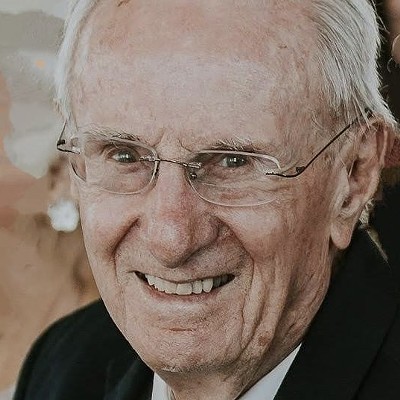

Comments
Comments are closed.
From 2014-2020, Seven Days allowed readers to comment on all stories posted on our website. While we've appreciated the suggestions and insights, right now Seven Days is prioritizing our core mission — producing high-quality, responsible local journalism — over moderating online debates between readers.
To criticize, correct or praise our reporting, please send us a letter to the editor or send us a tip. We’ll check it out and report the results.
Online comments may return when we have better tech tools for managing them. Thanks for reading.